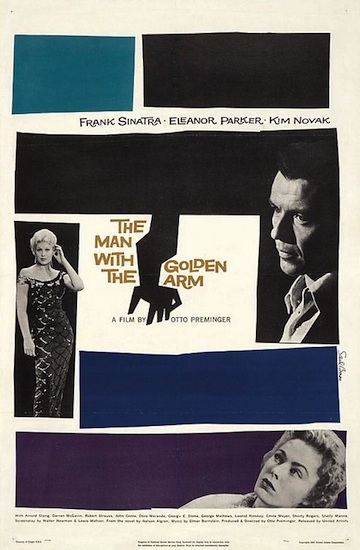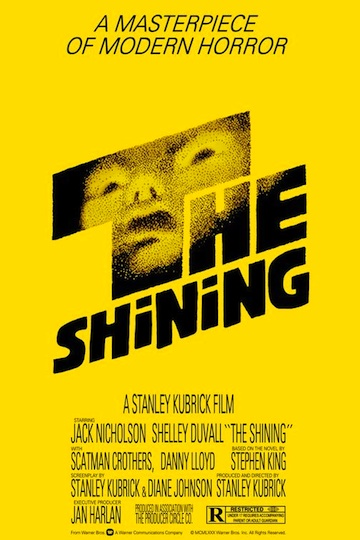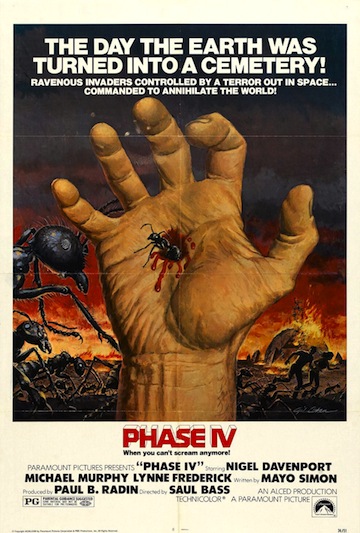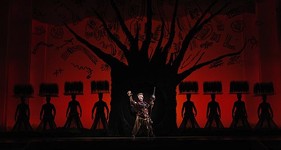Saul Bass Like You've Never Seen Him Before
Alamo hosts rare screening of title designer's directorial work
By Eli Black, 10:00AM, Fri. Nov. 30, 2012
What do the opening credits of Hitchcock’s Vertigo, the theatrical poster for Exodus, and the logo for the Girl Scouts all have in common? They were all created by Saul Bass. Even if you don’t know the name, and unfortunately many don’t, you know his work: It’s everywhere, beyond influential.
Whether you’re aware of Bass or not, I think it would be hard to create any kind of film title scene without being informed by some element of his design sensibilities – forever infused into the collective creative consciousness. But Bass also made another number of short films and one feature-length – all underappreciated and underseen. The Alamo Drafthouse, in conjunction with the Academy of Motion Picture Arts & Sciences’ Academy Film Archive, will highlight both in two shows this Saturday, Dec. 1.

The Bronx-born Bass began his career as a graphic designer, working primarily in advertising. His first film-related breakthrough project was designing the poster and title sequence for Otto Preminger’s controversial The Man with the Golden Arm. This opened the door to Bass working with a who's who list of great directors throughout his career, like Stanley Kubrick, Billy Wilder and of course Alfred Hitchcock – doing title sequences for Vertigo, North by Northwest and Psycho – to name a few. Bass played an integral role in the visual design of the legendary shower scene in Psycho, claiming to have directed it – though this is debated by various historians, he nonetheless definitely storyboarded and had a major impact on the visual orientation of the scene.
Bass also was responsible for many classic movie posters: West Side Story, Anatomy of a Murder, The Shining, among many others. The coolest posters of today are usually Saul Bass-inspired minimalist designs, featuring jagged bold letters or ambiguous simplistic shadowy images.

Undervalued even in his own time, demand for Bass’s work on films began to decline by the late Sixties, causing him to turn more to corporate advertising work. He created an enormous amount of iconic logos, working for companies like Dixie Cup and Quaker Oates, as well as Warner Communications and AT&T. He then experienced a film career resurgence in the late Eighties, being hired by a new generation of great filmmakers, including Martin Scorsese. Bass’s imprint in the film world is immeasurable, add to that his impact and effect on the corporate advertising industry, and you have a truly incredible talent.
Bass played with movement, shapes, and rhythms, combining animation with live-action in ways that nobody had before. He made films’ openings an integral part of the moviewatching experience, using seemingly concrete symbols to foreshadow complexities that lay ahead. A true auteur, there are common threads throughout all of his work, though he admirably didn’t just carry a sedimentary style from project to project, but rather analyzed each individual work to create something unique.
Bass made only one feature length film, the sci-fi curiosity Phase IV, a brand-new 35mm print of which will screen Saturday night at 9:30pm, along with a new high-definition digital transfer of film's original – and long-lost – end sequence. Ellen Harrington, Director of Exhibitions and Special Events for the Academy, will introduce the show and tell the story behind the rediscovery of Phase IV’s original ending.

Prior to that, May Haduong, the Academy Film Archive’s Public Access Manager, will host at 4:20pm a bundle of Bass’ little-seen shorts, including the Academy Award-winning “Why Man Creates.” In that film, Bass’s diversity is on display, presenting his humorous conceptualization of the history of the world and creativity within it. The film is not only visually striking on its own, it’s also amazing to see the impact his work had on others – from more obvious visual design influences seen in shows like Schoolhouse Rock to more subtle timing and movement influences seen in animation like the stuff Terry Gilliam did with Monty Python.
Bass was a supremely important artist of the 20th century whose work will live on forever. Unless you count imitation as the sincerest form of flattery and all that, he isn’t nearly as well known as he should be. Getting to watch Bass’ more personal projects at the Alamo is a rare treat, and definitely one that shouldn’t be passed up.
A note to readers: Bold and uncensored, The Austin Chronicle has been Austin’s independent news source for over 40 years, expressing the community’s political and environmental concerns and supporting its active cultural scene. Now more than ever, we need your support to continue supplying Austin with independent, free press. If real news is important to you, please consider making a donation of $5, $10 or whatever you can afford, to help keep our journalism on stands.
March 7, 2013
Jan. 31, 2013
Saul Bass, title design, Man With the Golden Arm, Phase IV, May Haduong, Academy Film Archive, Ellen Harrington







